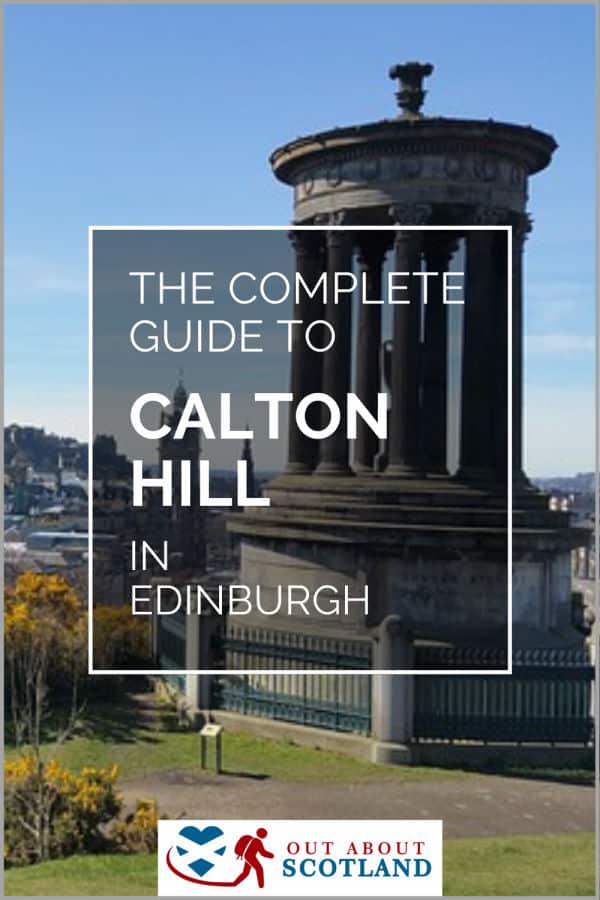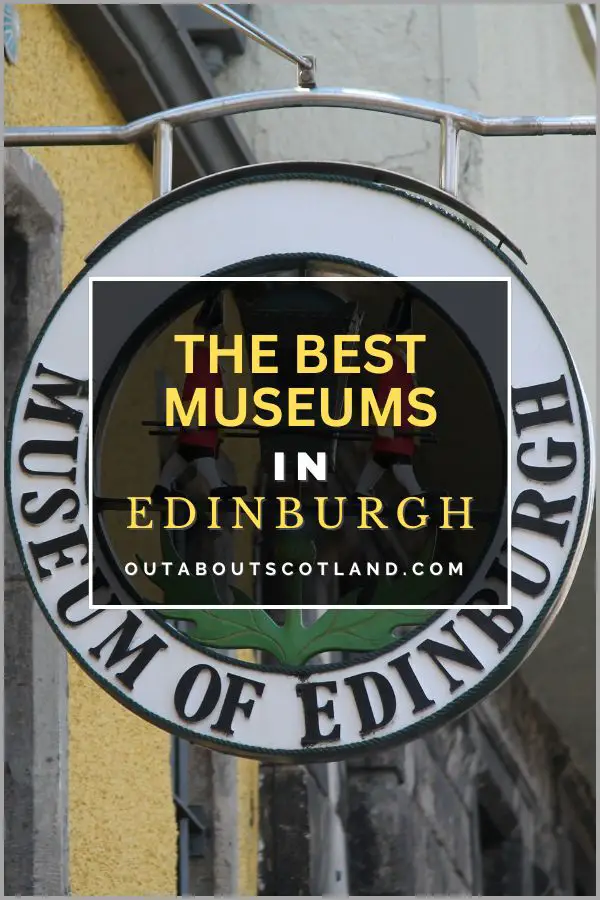Calton Hill, located close to Princes Street in the New Town, features a collection of Edinburgh’s most famous landmarks situated within a few hundred feet of each other. A visit to the site allows visitors to explore the city observatory (now an exhibition, art gallery and restaurant), the National Monument, the Dugald Stewart Monument and Nelson’s Monument.

| Address: | Calton Hill, Edinburgh, EH1 3BJ |
| Opening Hours: | 24/7 |
| Admission Price: | Free to visit Calton Hill. Nelson Monument has paid entry. |
| Parking: | No on-site car park. Paid car parks across Edinburgh. |
| Contact: | N/A |
| Facilities: | Restaurant, toilets, snack kiosk, luggage store, disabled access |
| Photos: | Virtual Tour YouTube Video |
Overview
Calton Hill is an all-too-often-missed tourist attraction located just a few hundred feet from the hustle and bustle of Princes Street, where a collection of Edinburgh’s most famous landmarks are positioned together on one of the most remarkable viewpoints in the city.
This hill has been awarded UNESCO World Heritage status and is entirely free to visit except for the upper balcony of the Nelson Monument.
To get there, walk east from the city centre and look for tourist information signs that will direct you up the short walk to the top of the hill. You can take in some truly breathtaking views at the top, from the rising cliffs of the Salisbury Crags in Holyrood Park to the bustling Princes Street, and Edinburgh Castle perched on Castle Rock.
Further back on the horizon lie the gently rolling slopes of the Pentland Hills, while in the opposite direction, the rolling waves of the Firth of Forth can be seen.

After enjoying the view, you’ll no doubt want to explore the historic attractions in the area. These begin at the base of the southern side of Calton Hill, where you’ll find St. Andrews House which is part of the headquarters of the Scottish government.
King George VI officially opened this imposing structure in 1940, and it’s a stunning example of the Art Deco style that was popular in Edinburgh at the time. Standing on the site of the old Calton Jail, it has been used as an administrative building for over 80 years and is currently the workplace for around 1,400 civil servants. Unfortunately, tourists aren’t allowed to go inside, but it’s definitely worth viewing from the top of Calton Hill to appreciate its architecture.
There are many other interesting landmarks on the hill including the National Monument, the Nelson Monument, the Portuguese Cannon, and the City Observatory, all of which are detailed in the section further down this page.
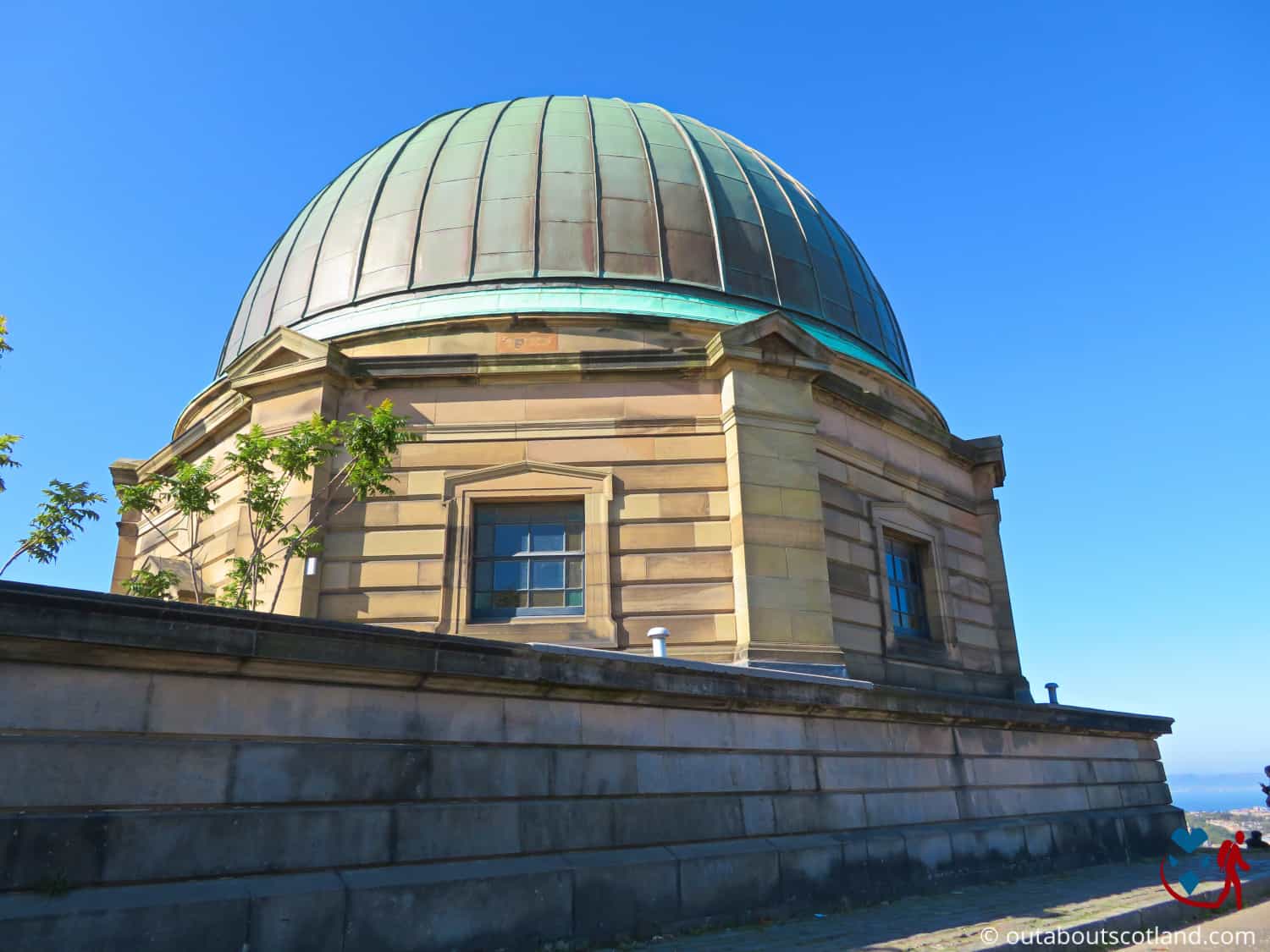
The Highlights
1: Visiting Calton Hill is completely free apart from a modest fee to climb the Nelson Monument. It’s worth paying the extra to climb up the monument as the views from the top are incredible.
2: There’s a free exhibition and art gallery on Calton Hill, as well as a restaurant that has the best window views in the city.
3: Due to its location, it’s possible to walk from Waverly Station on Princes Street to Calton Hill in around 10 minutes. For such a small city, Edinburgh manages to pack in a lot of attractions in a small area.
Visiting Tips
1: Calton Hill gets crowded with tourists at the weekend but mid-week is always quieter. Bear that in mind if you’re visiting the restaurant.
2: London Road Gardens, a pleasant green area that receives little tourist traffic, is just a 5-minute walk from the bottom of Calton Hill. From the gardens, it’s possible to stroll along Royal Terrace, which is one of the New Town’s most scenic streets.
3: An alternate view of Calton Hill can be found at Holyrood Park which is a 30-minute walk to the east. Both locations offer amazing views.
History
Although Calton Hill has been a part of the landscape for thousands of years, it wasn’t until 1456 that it became a major feature of the city. At this time, King James II was enacting a policy of preparing the country for a possible invasion, so the ground around the hill was designated as a site for performing tournaments and sports (although golf and football were banned).
The King’s idea was that archery and fighting tournaments would hone the battle skills of his people. However, as time passed, the hill instead became known as a place of recreation.
The National Monument
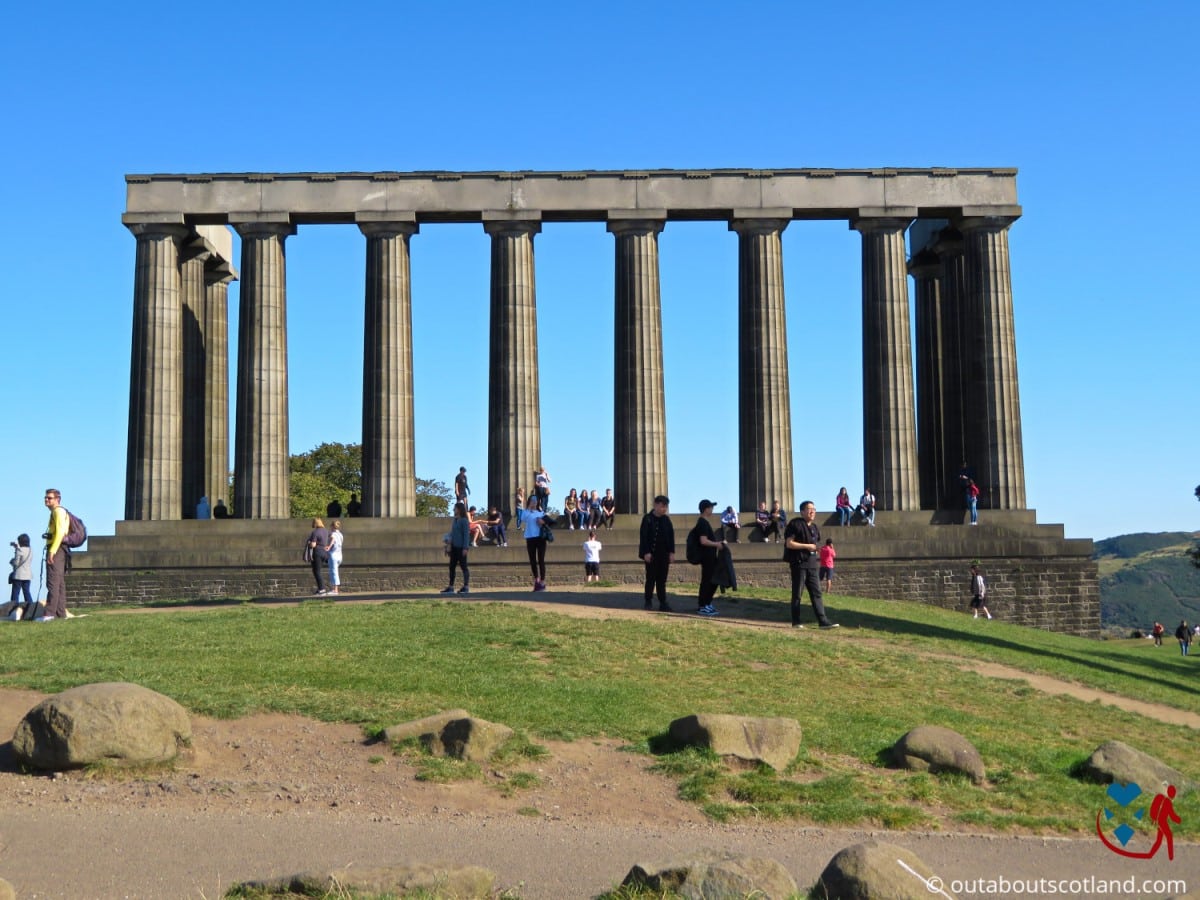
The National Monument is Scotland’s memorial to the Scottish soldiers and sailors who died during the Napoleonic Wars, and it’s the dominant feature of Calton Hill. Although work started in 1826, the city ran out of money and couldn’t afford to finish it, so in 1829, building work ceased forever. The failure of the Scottish government to fund the remainder of the monument caused outrage in 19th-century Edinburgh, and this is the reason why even to this day it has the nickname ‘Edinburgh’s Disgrace’.
Styled after the Parthenon in Greece, the National Monument comprises a series of columns placed on top of an enormous stepped plinth, which is a popular photo opportunity for anyone able to climb them.
There have been several proposals for the completion of the monument over the years, but all have been rejected. The memorial is unlikely to ever change from its current unfinished state, but it’s still an interesting piece of Edinburgh’s history nonetheless.
The Nelson Monument
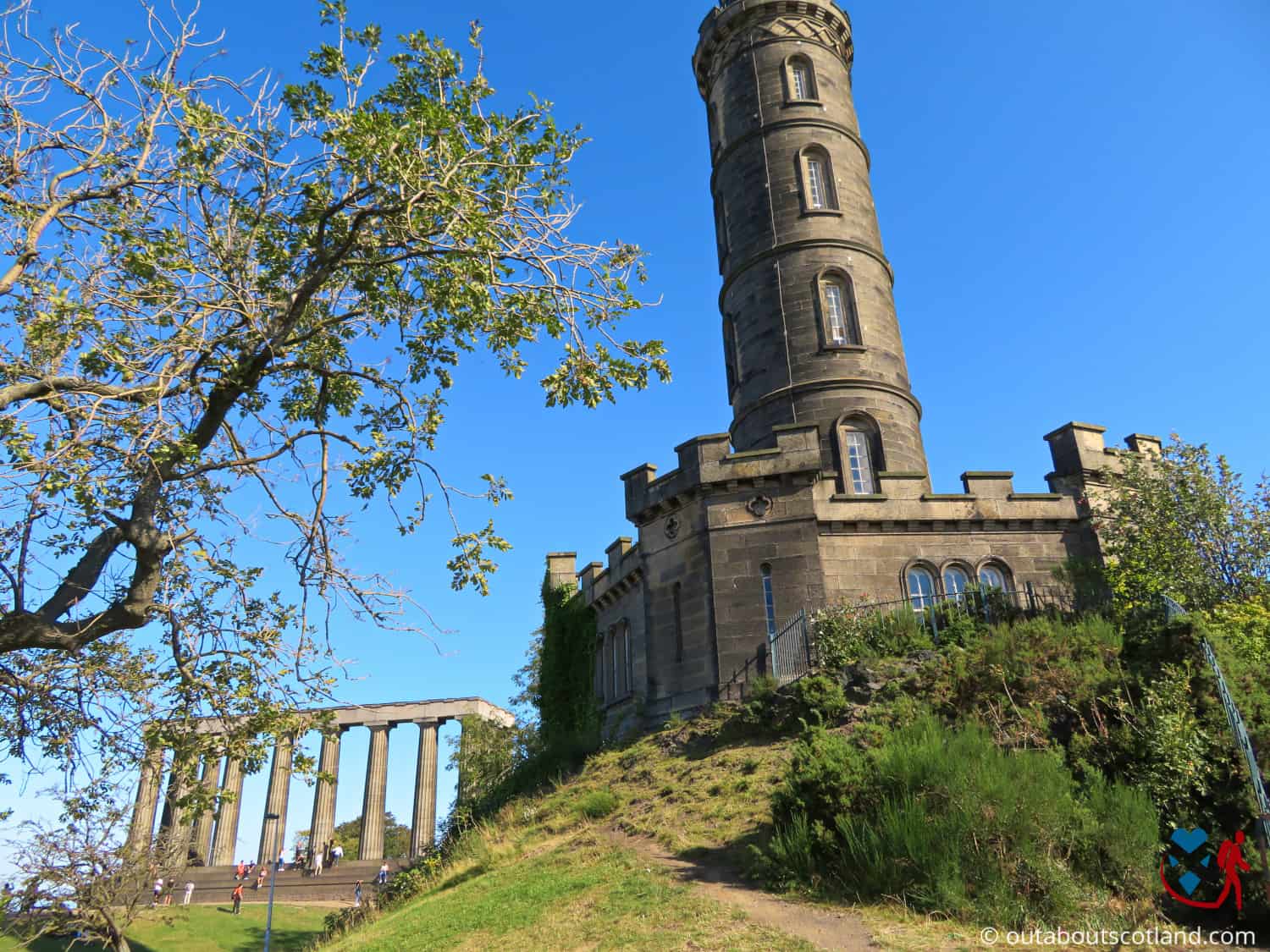
Just a few yards from the National Monument is the commemorative tower that honours Admiral Nelson, the British sailor who was instrumental in many victorious sea battles during the Napoleonic Wars.
The Nelson Monument was built between 1807 and 1815 and is well-known for the time ball perched at the very top which has been used to set the clocks of passing ships on the Firth of Forth for hundreds of years.
The ball itself is a large metal sphere that’s raised to the top of the monument’s mast every day. At precisely 1 pm, the ball is released so that it drops to the bottom of the pole, at which point all observing ships in the Firth of Forth set their clocks. Rather helpfully, because the ball is difficult to see further inside the city, the One O’Clock gun at Edinburgh Castle is synchronised with the time ball so that locals can set their clocks too!
The monument sits on a pentagonal building that’s open to the public and contains many historical artefacts related to the Admiral, and for a small fee, tourists can climb the stairs to the very top of the column. If you manage to get up there, you’ll be rewarded with fantastic views across the city.
Dugald Stewart Monument
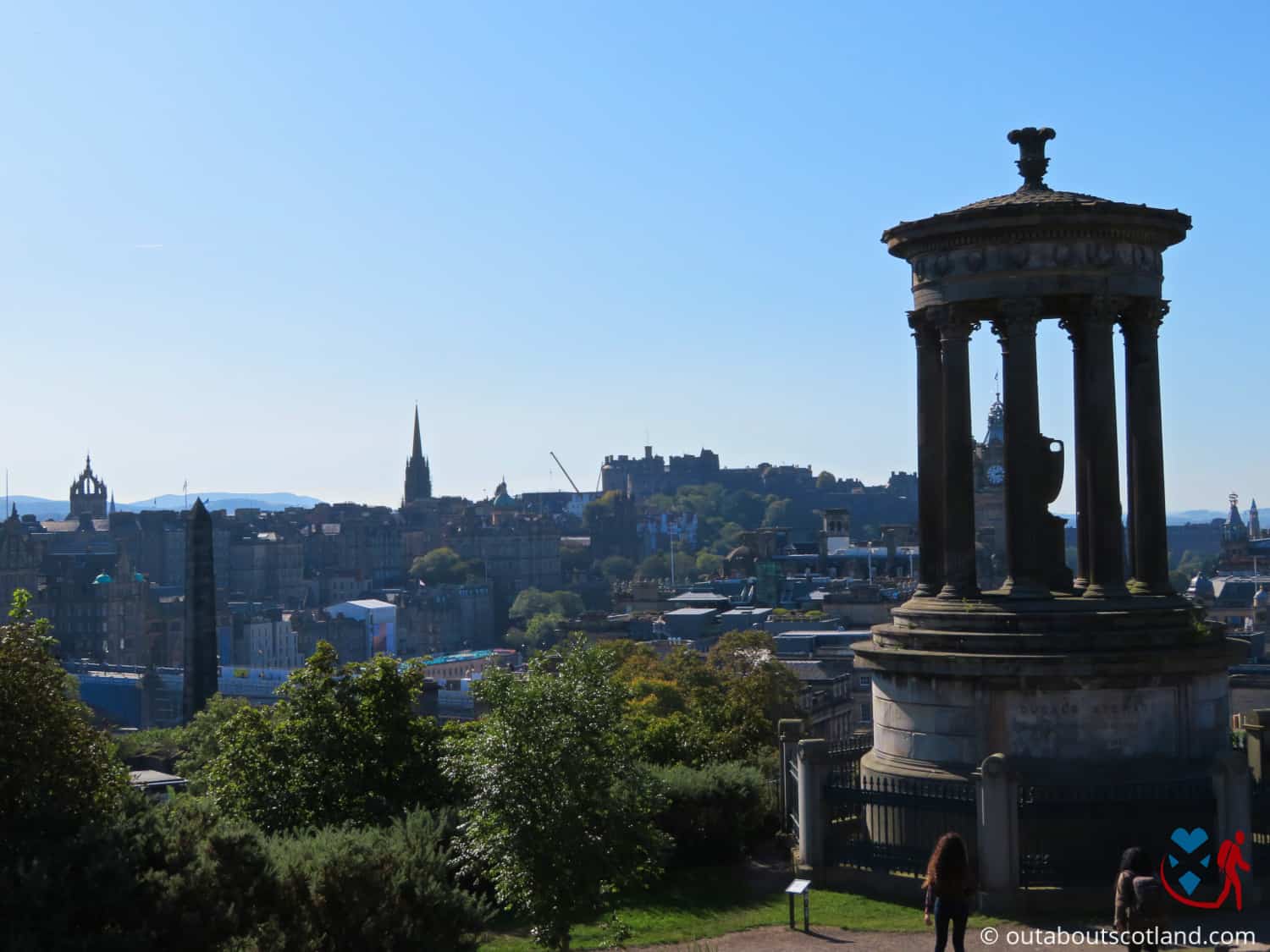
Leaving Nelson’s Monument, you’ll see the Dugald Stewart Monument, which is another famous landmark located on Calton Hill.
While the monument is photo-worthy in its own right, it’s the gorgeous view of Edinburgh behind it that attracts most tourists, which is why the Dugald Stewart Monument has become one of the most photographed landmarks in the city.
Although not familiar to many people today, Dugald Stewart was a respected professor at the University of Edinburgh who held the chair of moral philosophy until his death in 1828.
Built in a classical Greek style, the monument fits perfectly into a photo of the Edinburgh skyline, especially at dusk when the lights of the city are turned on. With the waters of the Firth of Forth in the distance and the city lit up in the foreground, it has to be one of the most photogenic locations in Scotland.
The City Observatory
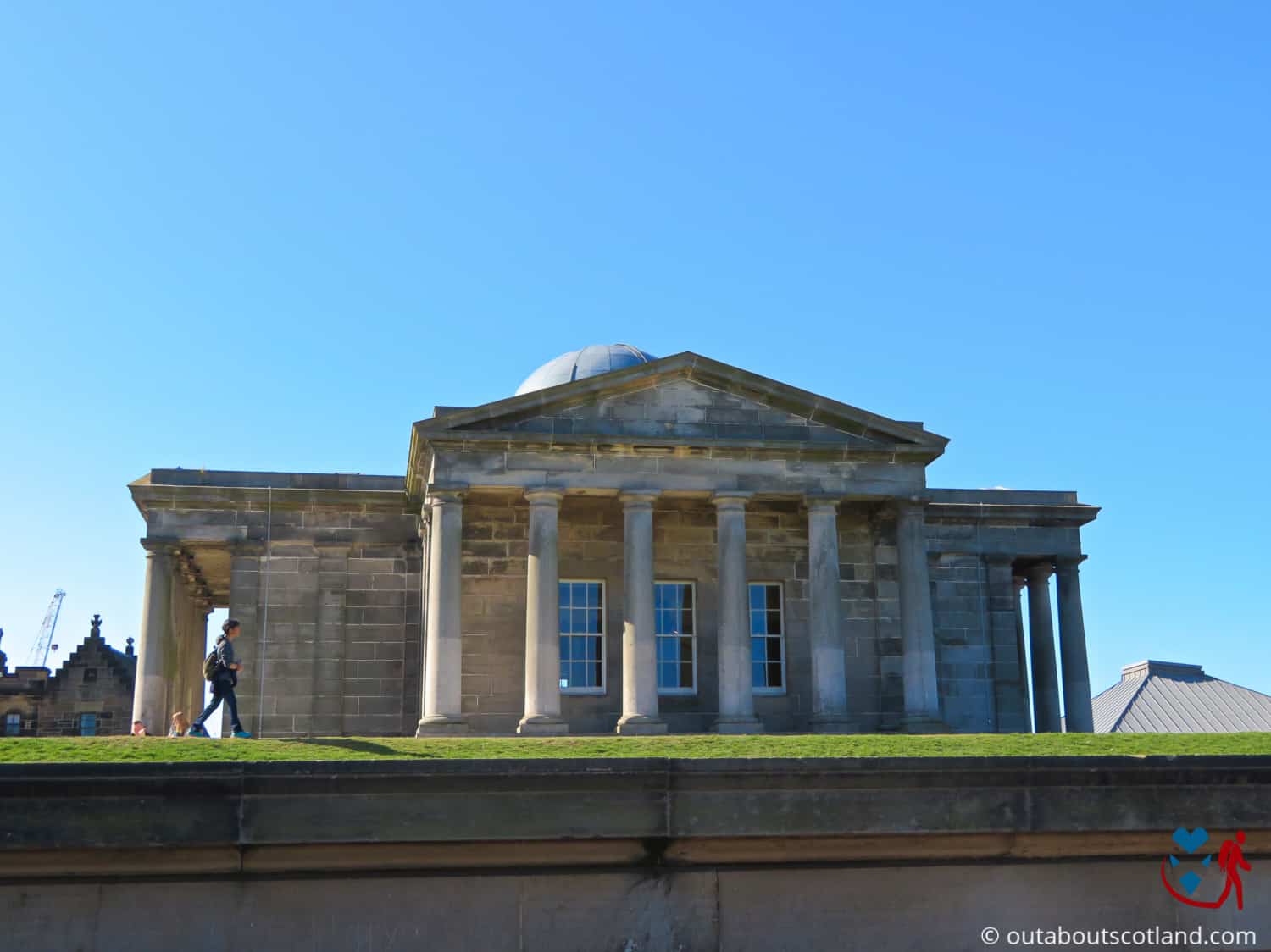
As you stand at the top of Calton Hill, you might be wondering what the domed building is in the centre. If what appears to be a Greek temple piques your interest, you’ll be interested to learn that the structure is actually the City Observatory.
Building works for the observatory started in 1818 and were completed in 1822. The observatory, designed by William Playfair, a well-known architect from Edinburgh, is now one of the most recognisable features in the city.
Edinburgh Museums and Galleries have converted the building into a major tourist attraction that includes an art gallery, an exhibition, and an accompanying restaurant. The exhibition is free to visit and there are benches outside where you can watch the ships sail across the Forth. If you’d rather sit and enjoy the view over a meal, I highly recommend the restaurant next door which has panoramic windows overlooking the city.
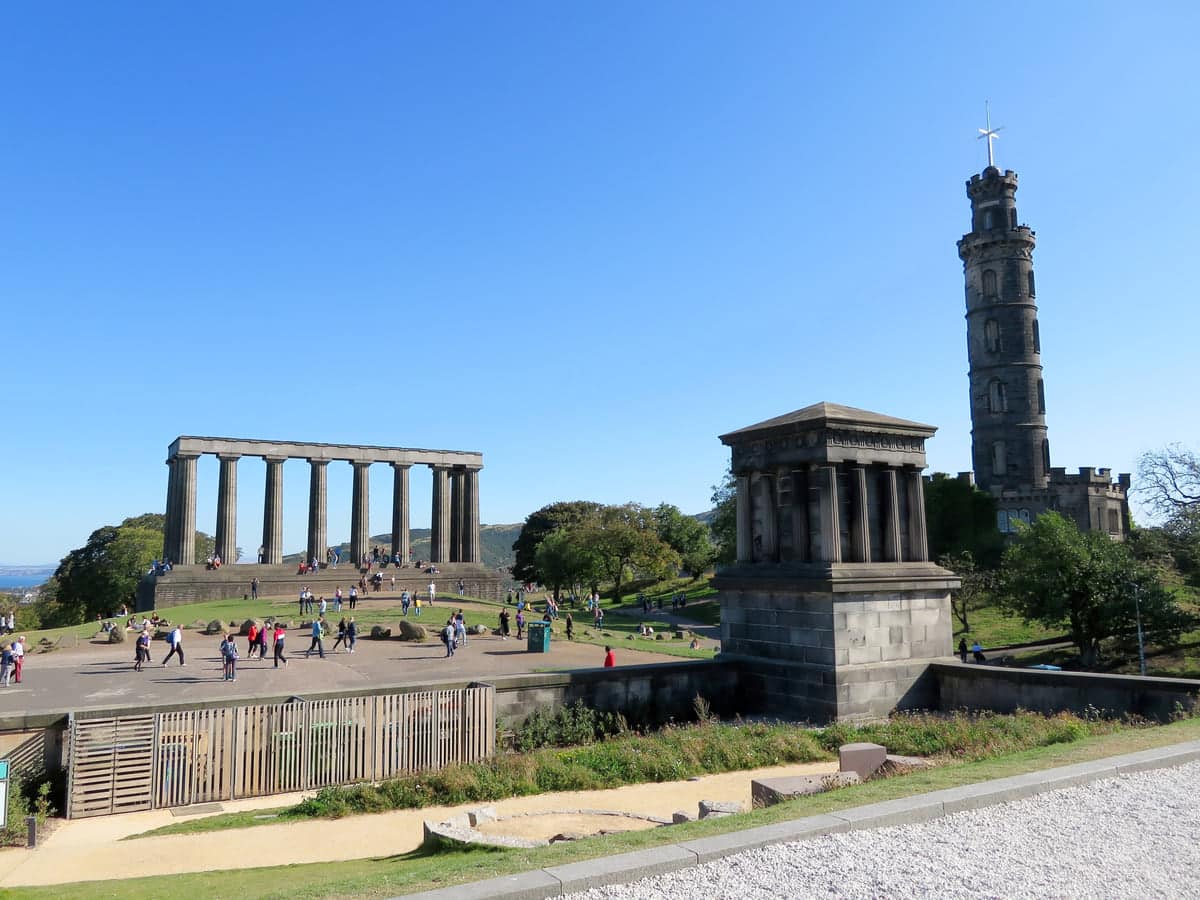
Things to Do
Panoramic Sightseeing: Start your journey with a leisurely walk up Calton Hill. As you get to the top, the panoramic views of Edinburgh’s skyline will take your breath away. It presents a unique opportunity to capture stunning photographs of the city’s iconic landmarks including Edinburgh Castle, The Scott Monument, and Arthur’s Seat.
See the National Monument: Take a step back in time at the National Monument. Inspired by the Parthenon in Athens, it’s an unfinished monument dedicated to the Scottish soldiers and sailors who died during the Napoleonic Wars. Standing on the monument for a selfie is a must-do for any tourist.
Explore the Nelson Monument: This is a commemorative tower in honour of Admiral Nelson’s victory at the Battle of Trafalgar in 1805. Climb up the spiral staircase to the top for an even better view of the city. The time ball at the top, which drops at 1 p.m. daily, is a tradition observed since 1853.
Discover the Dugald Stewart Monument: This circular temple is dedicated to Scottish philosopher Dugald Stewart. Not only is it an architectural marvel, but its location is a favourite among photographers – especially during sunset when the city is bathed in a golden glow.
Picnicking on the Hill: After a day of exploration, unwind with a picnic on Calton Hill. The hill’s grassy slopes are perfect for laying down a blanket and enjoying a Scotch egg and a macaroni pie (two staples of the Scottish diet) as you soak in the views. If you’d rather have a sit-down meal, there’s a good (albeit pricey) restaurant next to the City Observatory.
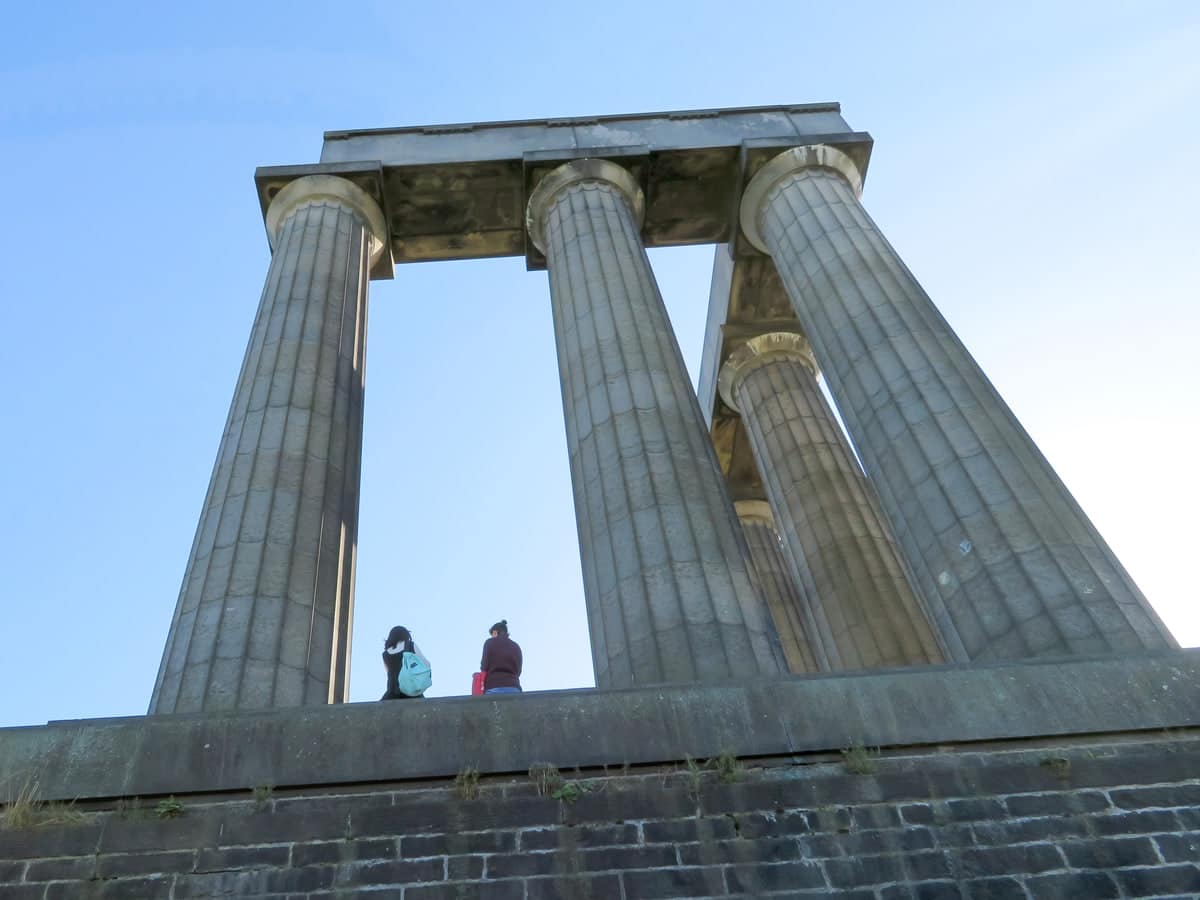
Things to Do Nearby
Holyrood Park. Edinburgh EH8 8AZ. 20-minute walk.
One of the largest city parks in the world, Holyrood Park covers an area of more than 650 acres. The highest point in the park is Arthur’s Seat which is a long-extinct volcanic plug. Popular areas to visit are Salisbury Crags and Duddingston Loch.
The Scott Monument. E. Princes St Gardens, Edinburgh EH2 2EJ. 12-minute walk.
A Gothic-style monument with staircase and lookout platforms. Dedicated to Sir Walter Scott, located in Princes Street Gardens.
Scottish Parliament Building. Edinburgh EH99 1SP. 16-minute walk.
The official location for the Scottish government. The ultra-modern building is open to the public for guided tours and the viewing area allows the public to watch live debates in progress.
Holyrood Palace. Palace of Holyroodhouse, Canongate The Royal Mile, Edinburgh EH8 8DX. 17-minute walk.
Holyrood Palace is the monarch’s official residence in Scotland. The palace is open to visitors who can explore the royal rooms on a self-guided tour. Tickets include a visit to The Queen’s Gallery and Holyrood Abbey.
The Museum of Edinburgh 142-146 Canongate, Edinburgh, EH8 8DD. 13-minute walk.
A museum that serves to inform and educate visitors about the history of Edinburgh, from its industrial heritage to the people who made the city into what it is today. Free entry.
Frequently Asked Questions
What is Calton Hill famous for?
Calton Hill is a famous tourist destination in Edinburgh thanks to its collection of historic monuments and the newly-renovated City Observatory.
Highlights of a visit include viewing the Edinburgh skyline, climbing the 143 steps to the top of The Nelson Monument, and enjoying a meal with a view in The Lookout by Gardener’s Cottage restaurant.
How long does it take to climb Calton Hill?
Calton Hill can be walked up in around 5 minutes. The hill is located in the centre of Edinburgh and has an elevation of 338 feet (103 metres). The most popular access points are from Royal Terrace to the north and Regent Road to the south.
What is at the top of Calton Hill?
The top of Calton Hill is home to several monuments including The National Monument, The Dugald Stewart Monument, The Nelson Monument, and the City Observatory and Observatory House.
The observatory has recently been renovated to feature a museum, an art gallery, and a restaurant.
In addition to the Calton Hill monuments, the top of the hill is a popular location for tourists to look at panoramic views of Edinburgh, with the Firth of Forth and Fife to the north and the Pentland Hills to the south.
Does Calton Hill have parking?
Calton Hill does not have designated visitor car parking but there is pay-and-display on-street parking on Regent Road.
Is Calton Hill easy to climb?
Calton Hill in Edinburgh is an easy climb. The entire pathway is tarmacked and is either a long incline or stairs, and it isn’t very steep. Visitors can enjoy lovely views across the city to the coast and several monuments, including the Dugald Stewart Monument and the Nelson Monument, which they can climb to enjoy better views. From Waterloo Place, walking to the top of Calton Hill and taking some photos will take about 25-30 minutes.
What’s the best way to see Calton Hill?
The best way to see Calton Hill is to take a self-guided stroll up the hill and enjoy the stunning views from the top. Several paths and staircases head up to the summit, and each one offers a different perspective of the city. The nearest entrance from Princes Street is the signposted ‘Steps to Calton Hill’ located on Regent Road opposite the Scottish Government building.
Once you reach the top you can enjoy panoramic views of Edinburgh’s skyline including famous landmarks such as Edinburgh Castle and Arthur’s Seat. Additionally, you can explore the various monuments and buildings on the hill, such as the National Monument and the Nelson Monument.
Do you need to book in advance to visit Calton Hill?
You do not need to book in advance to visit Calton Hill.

